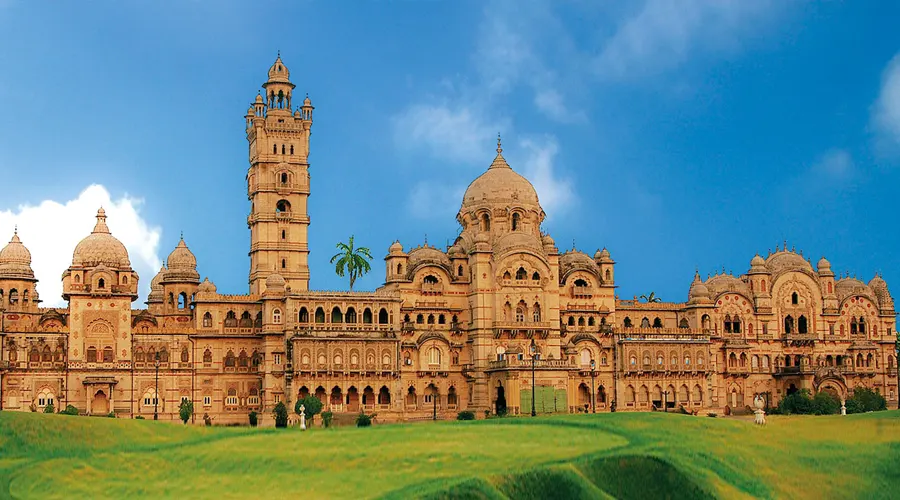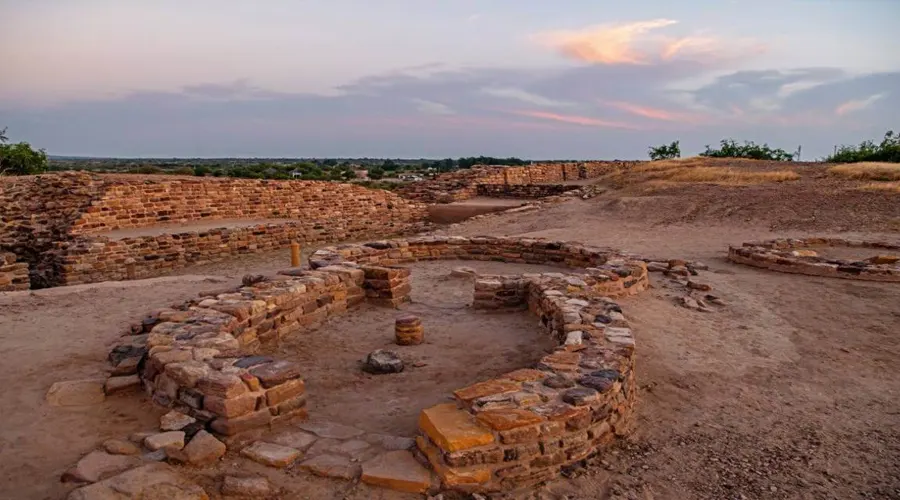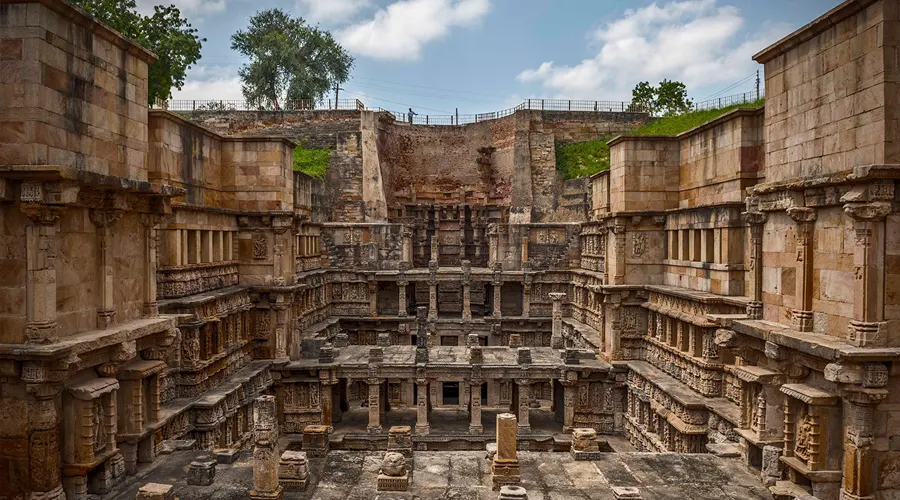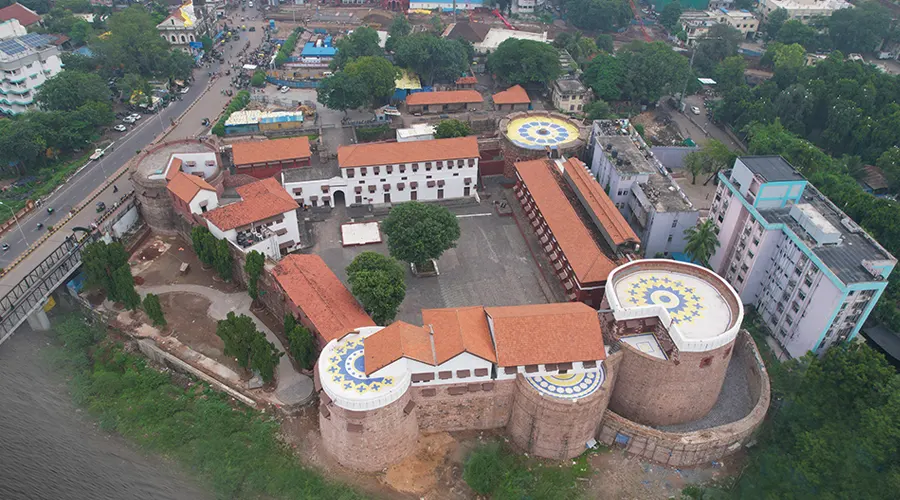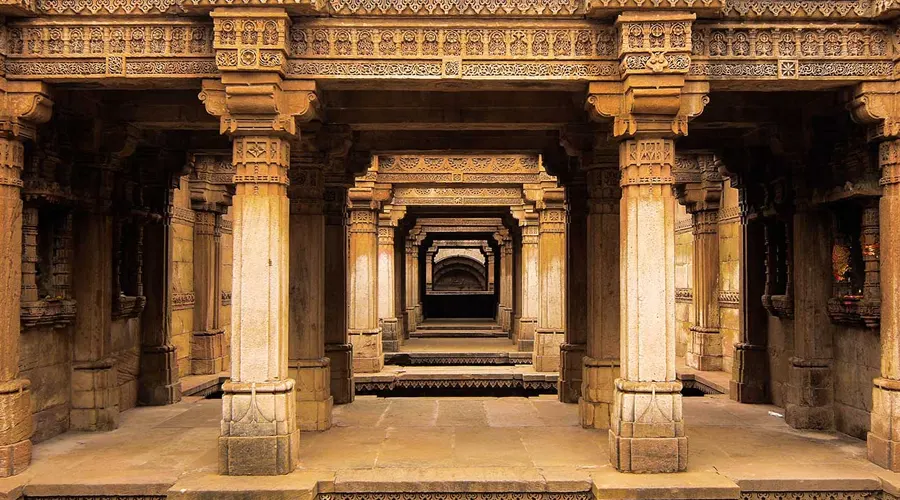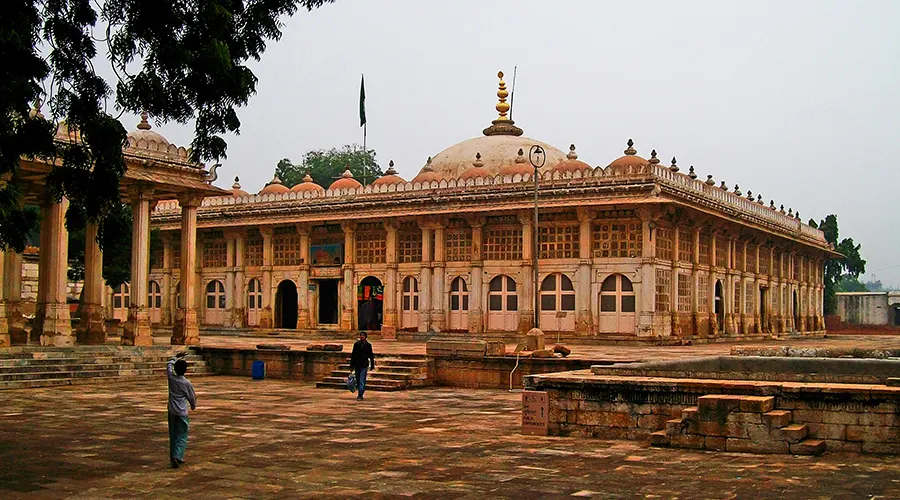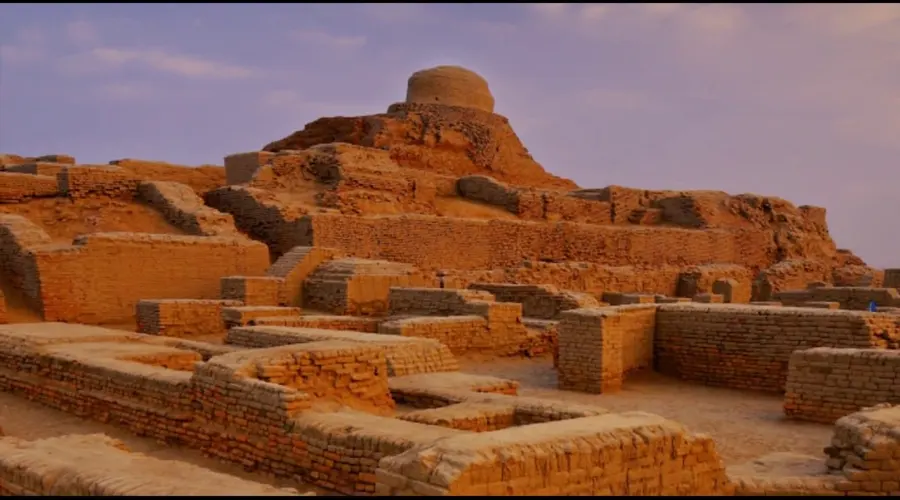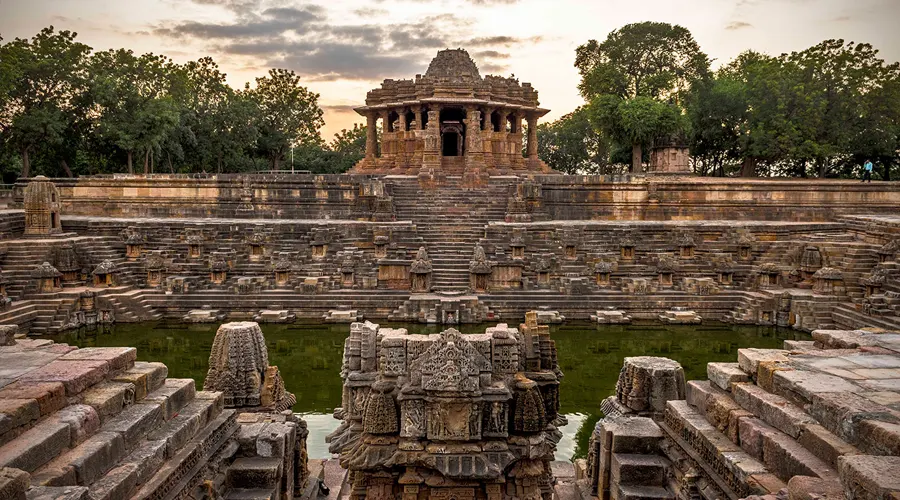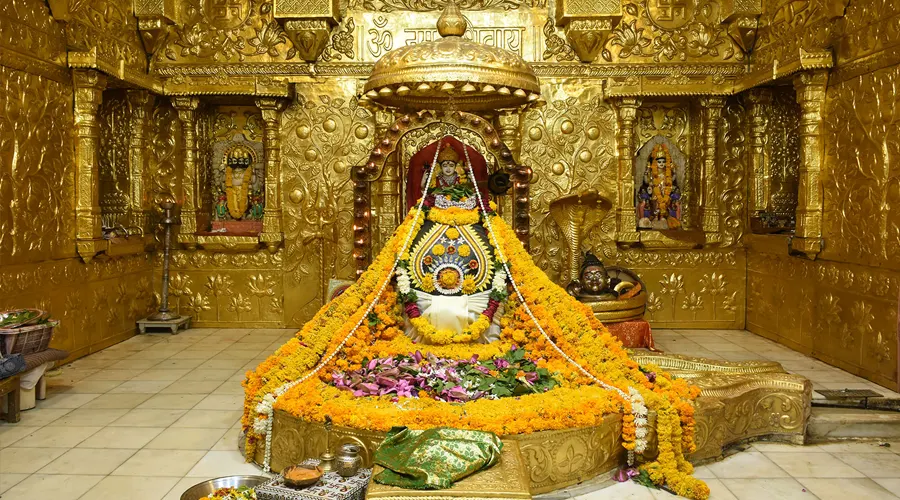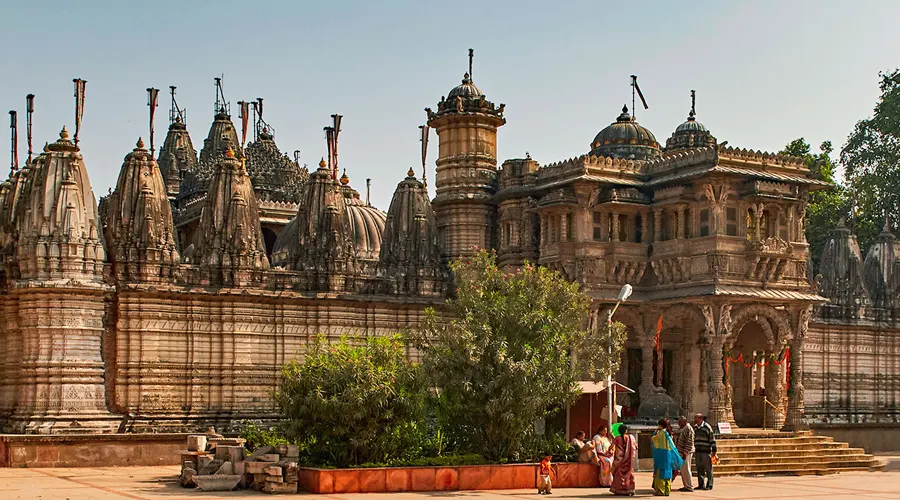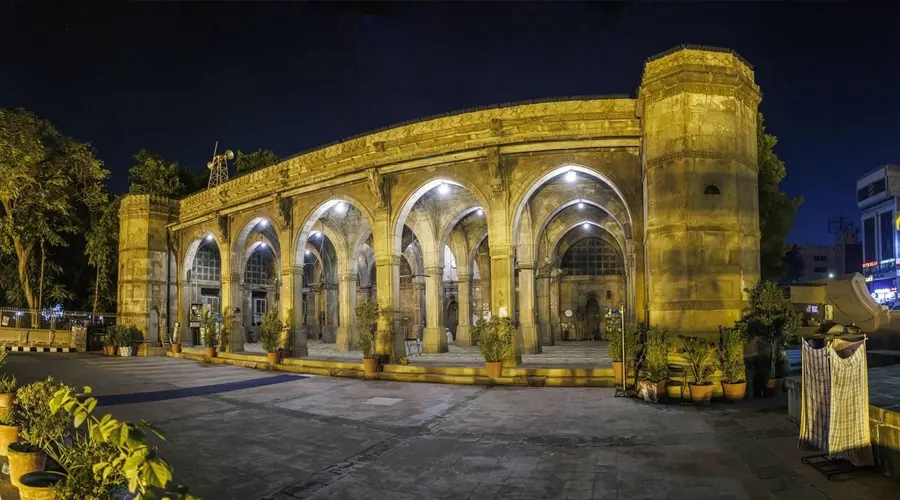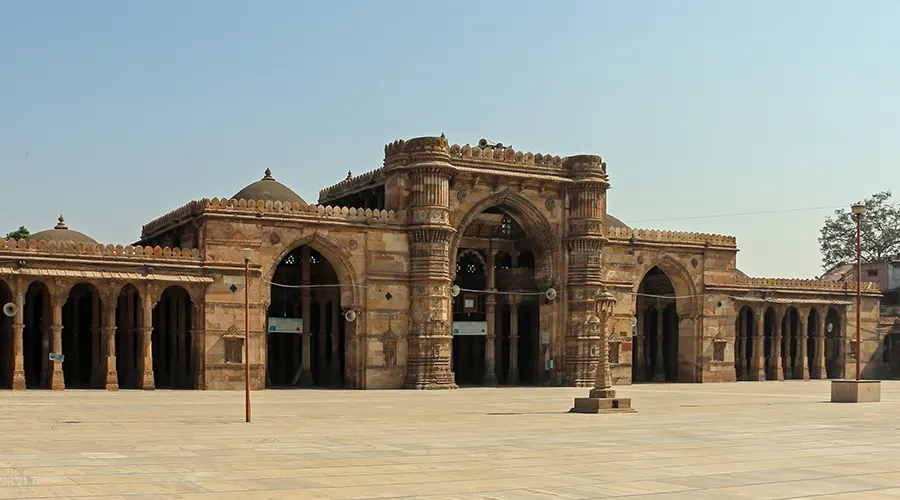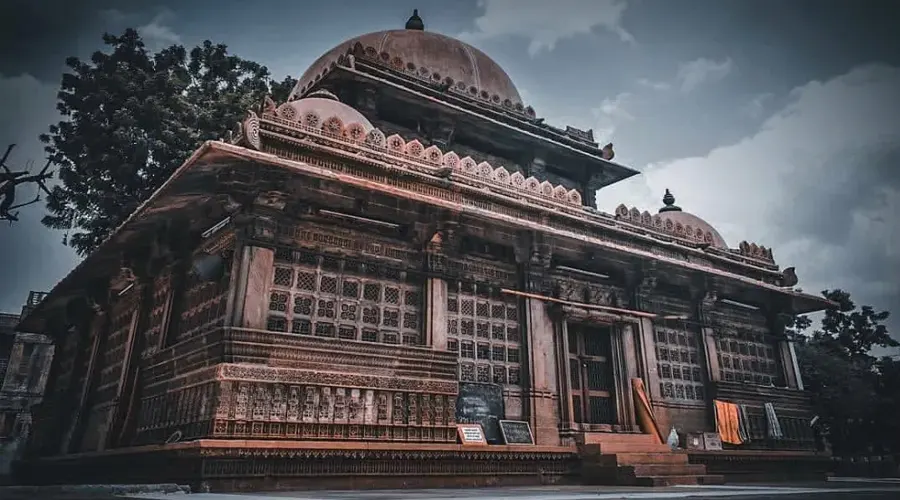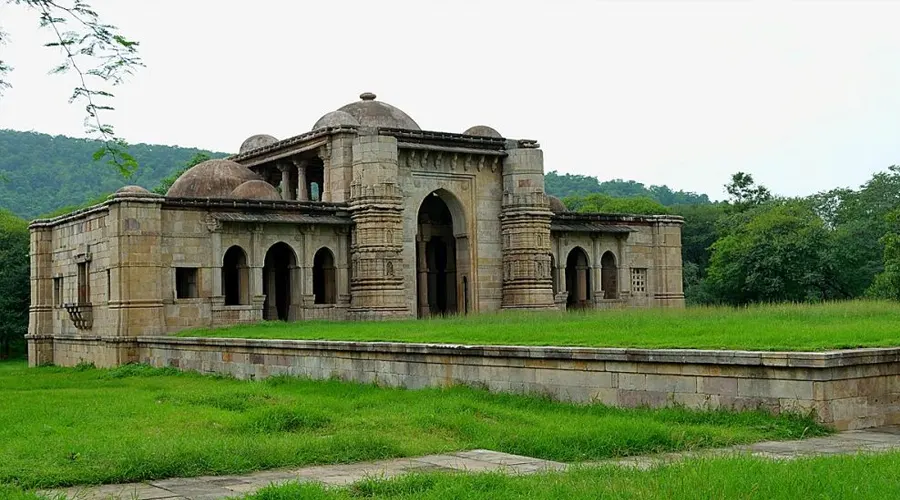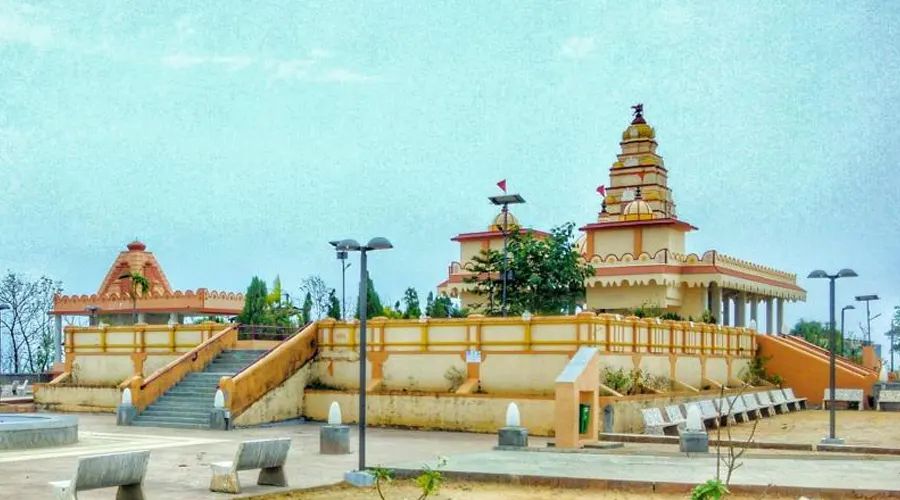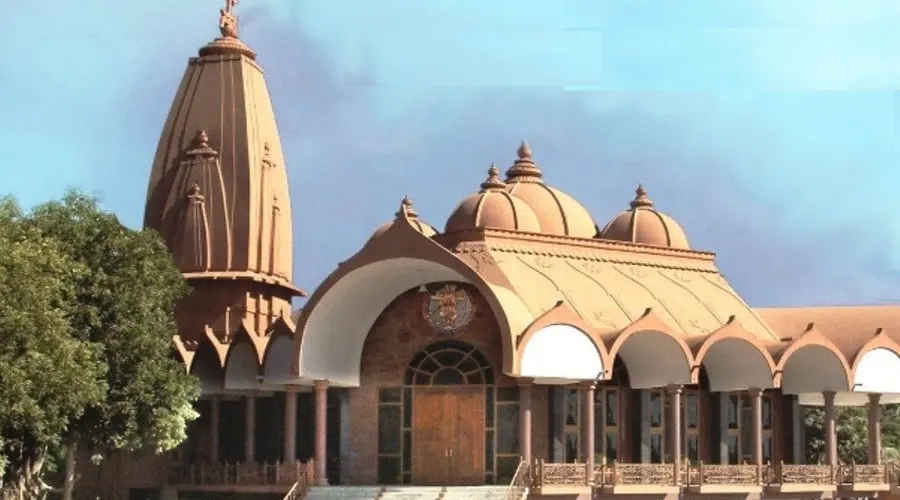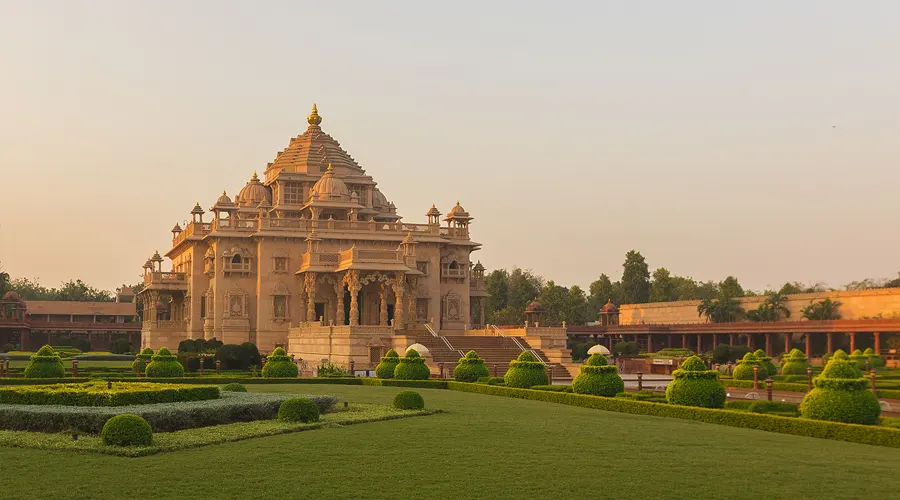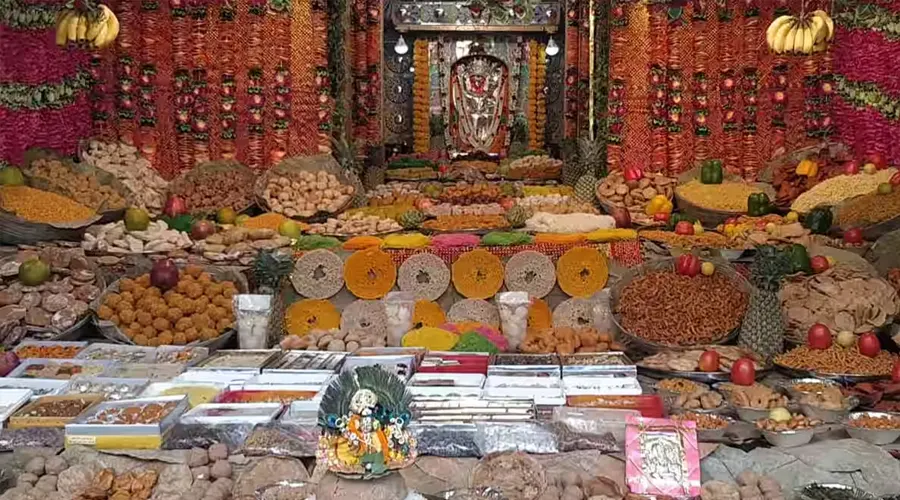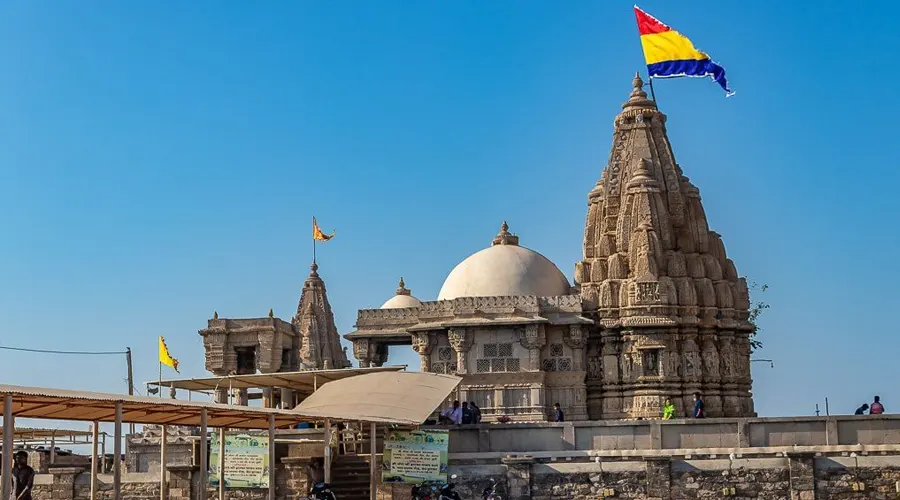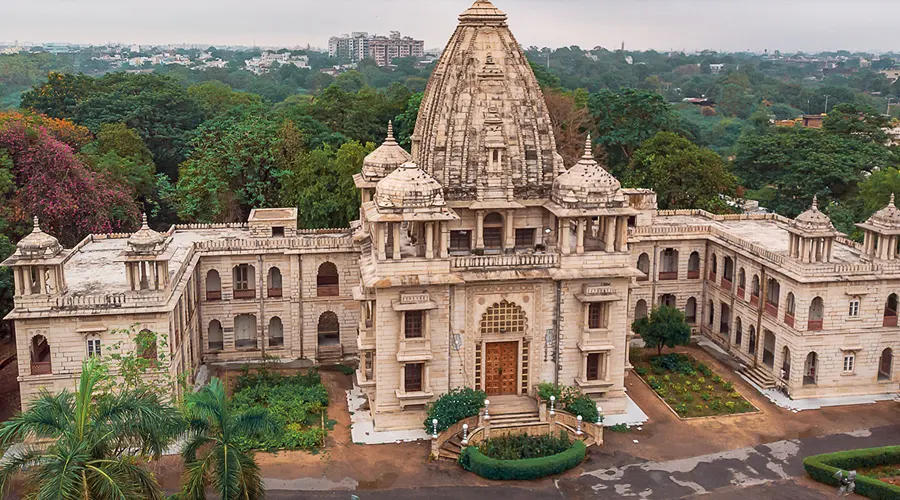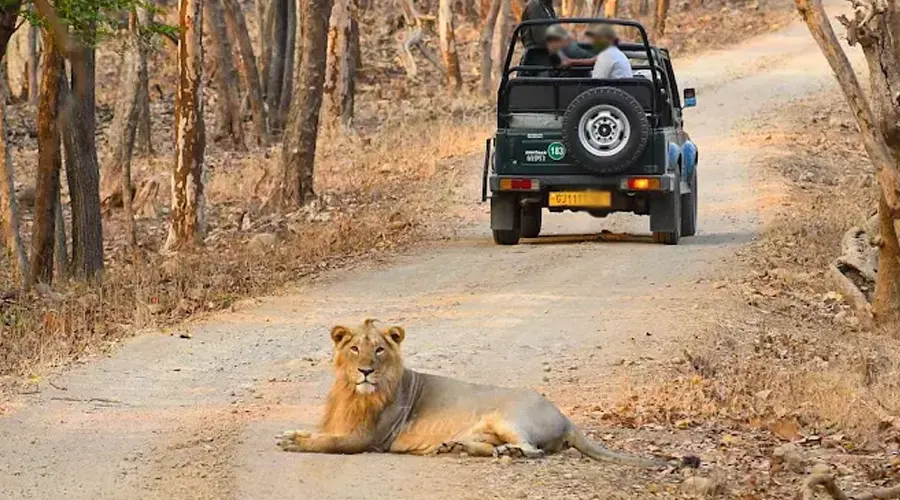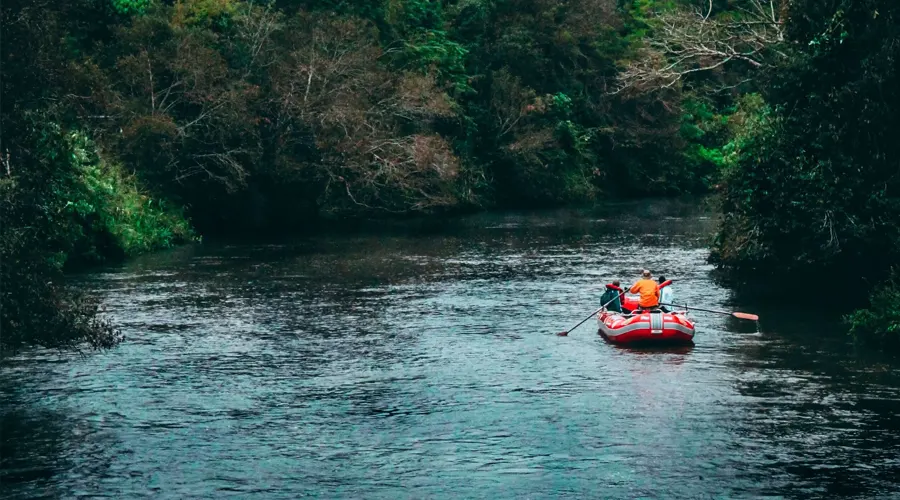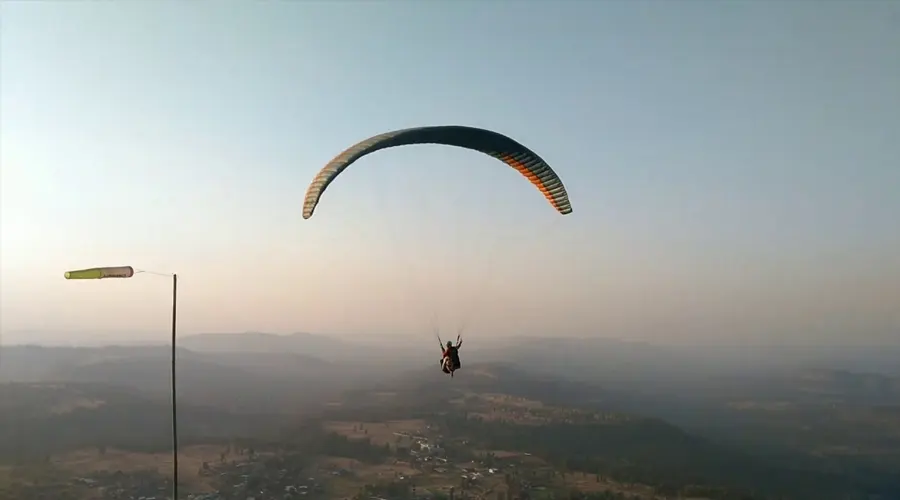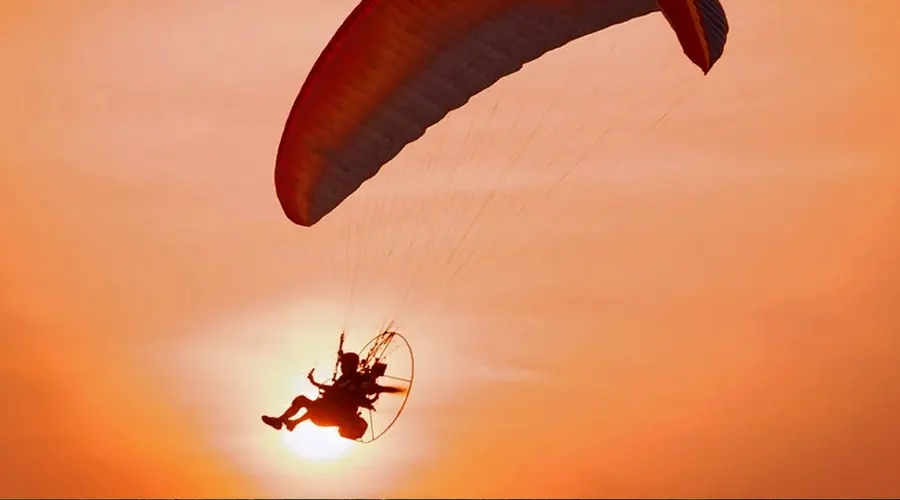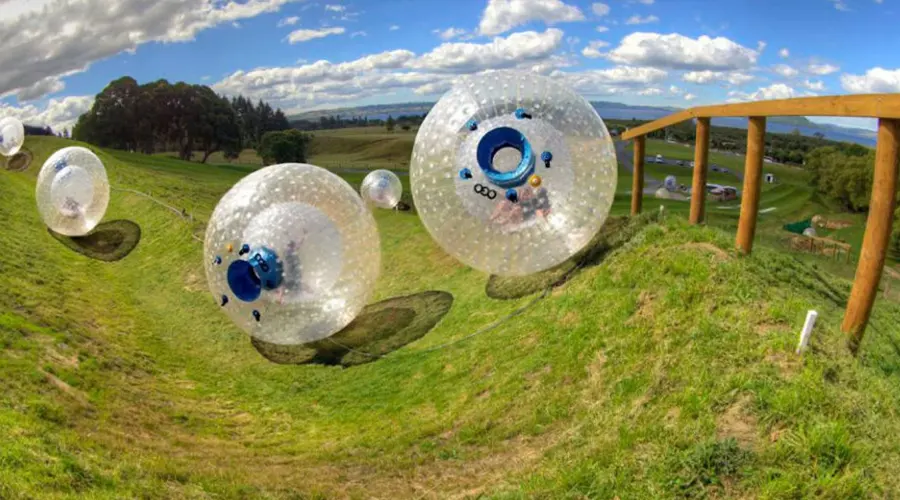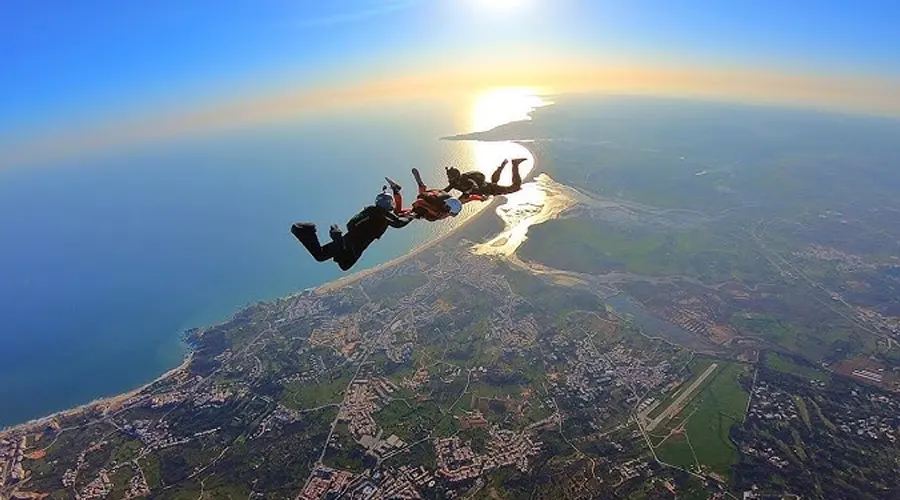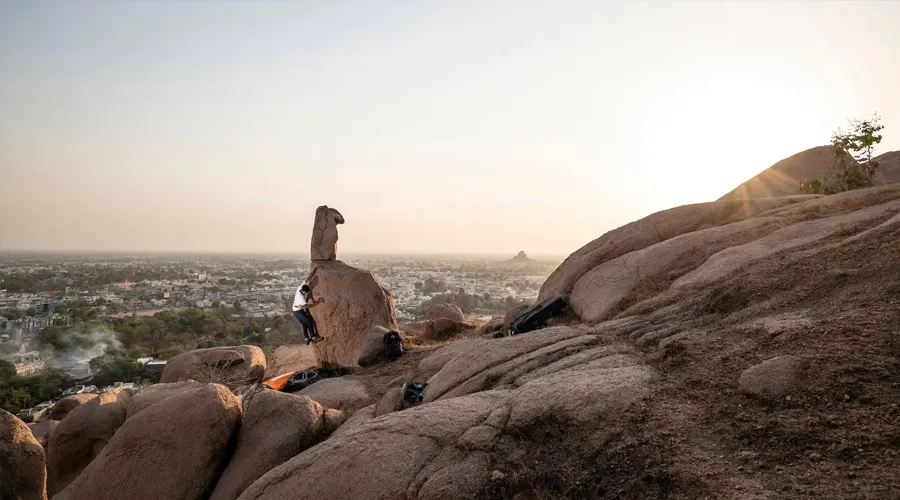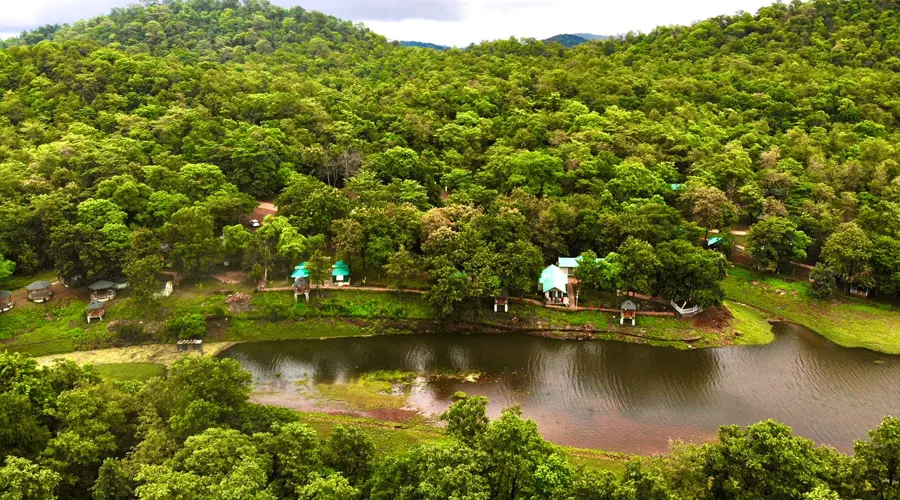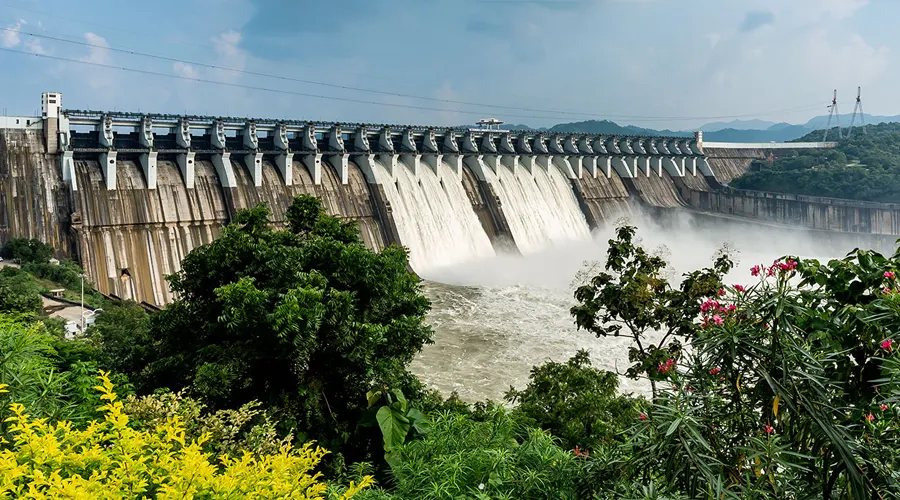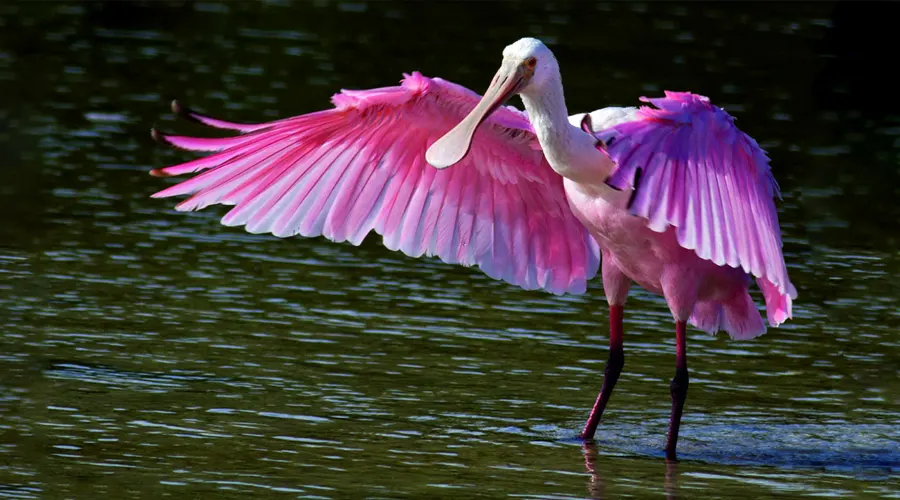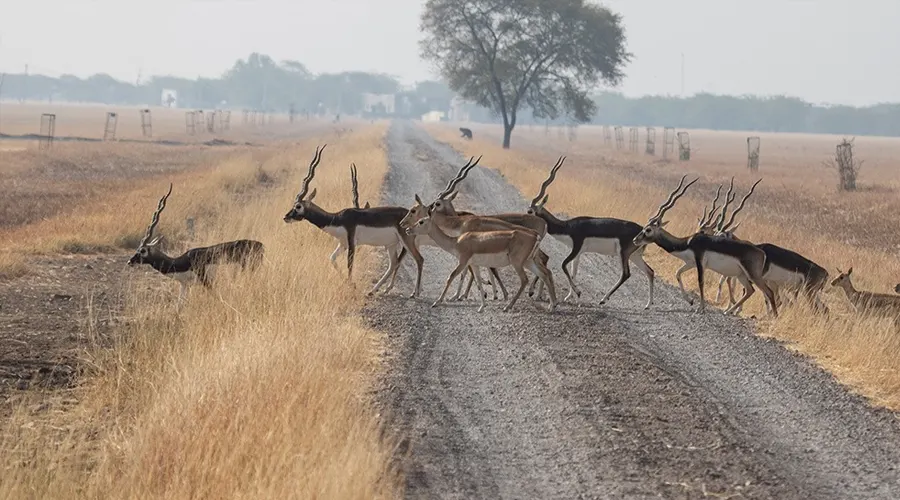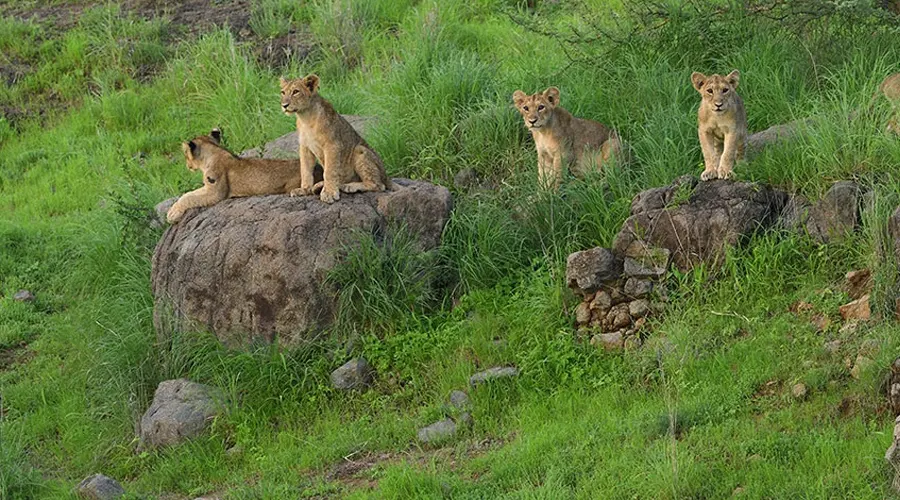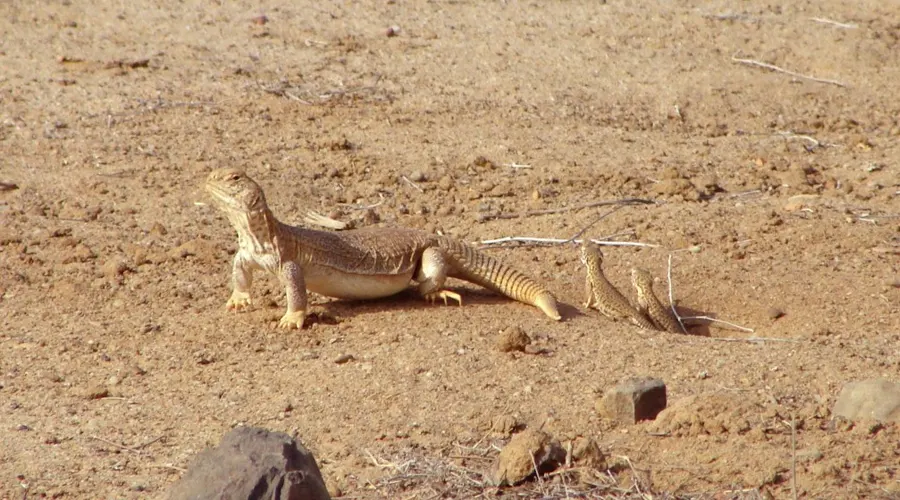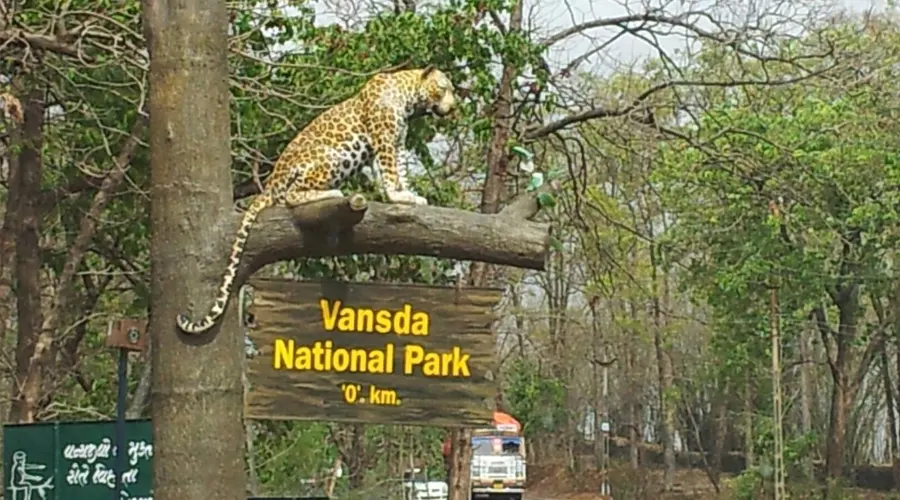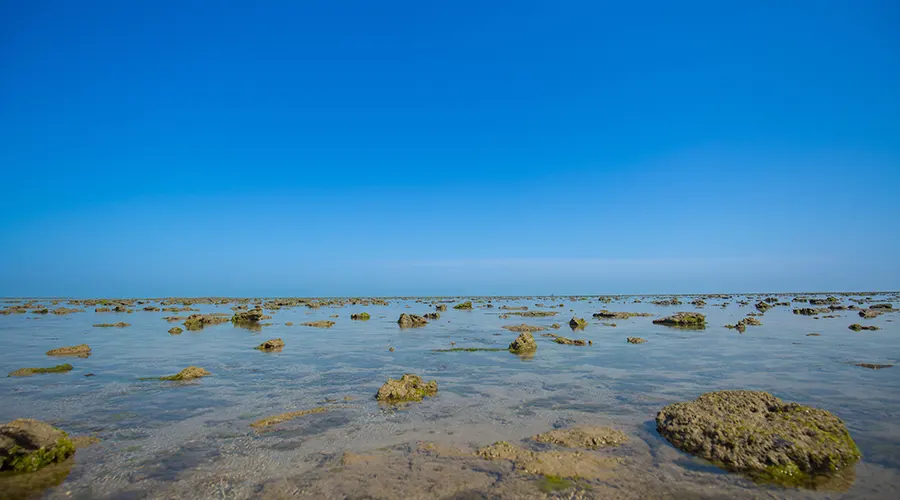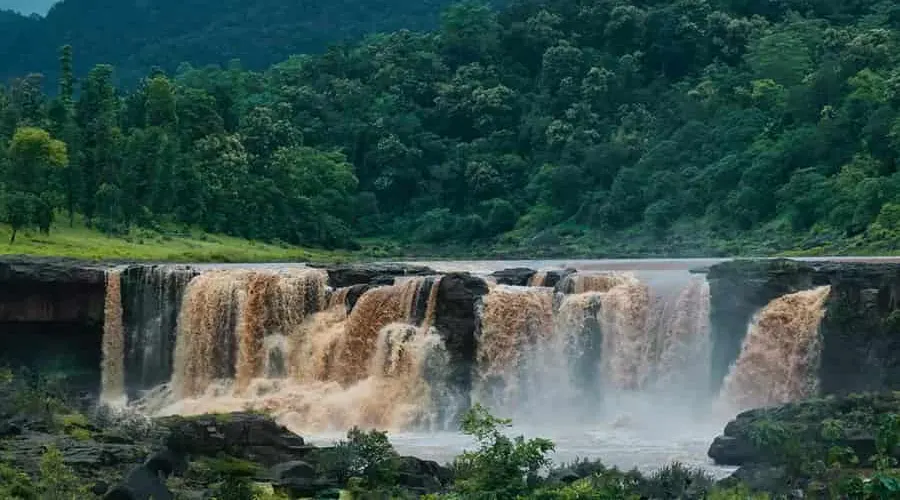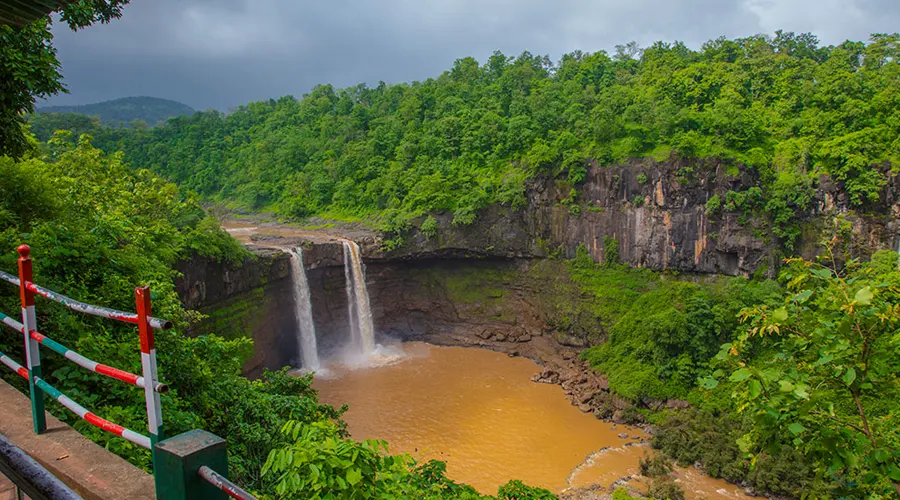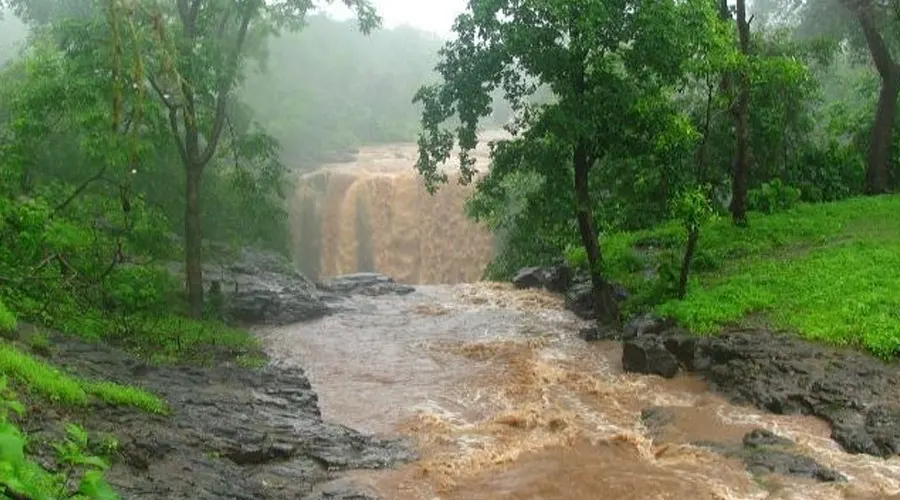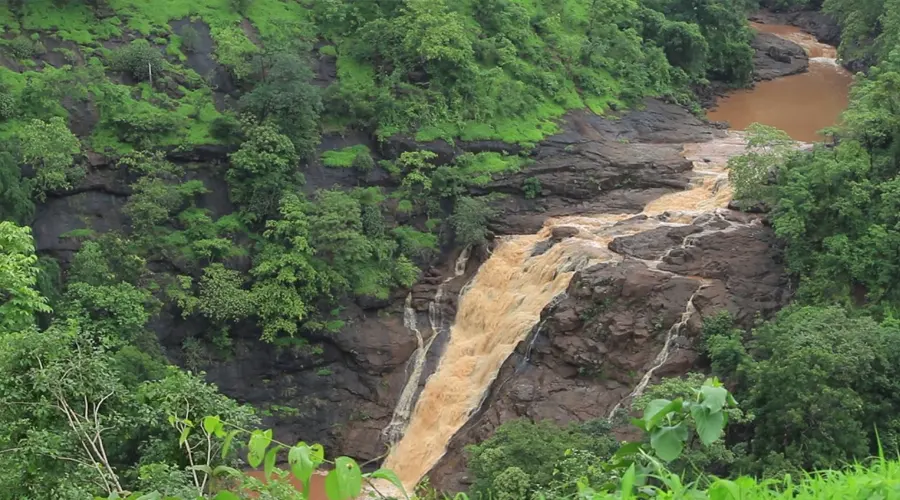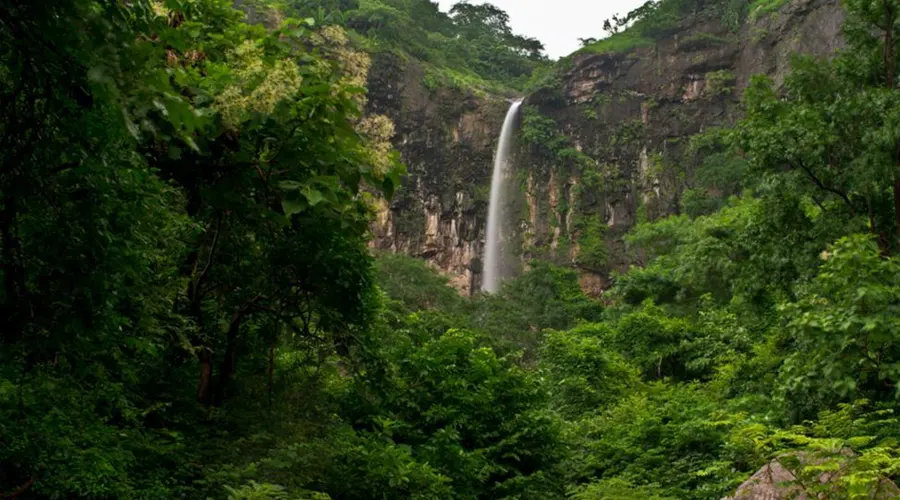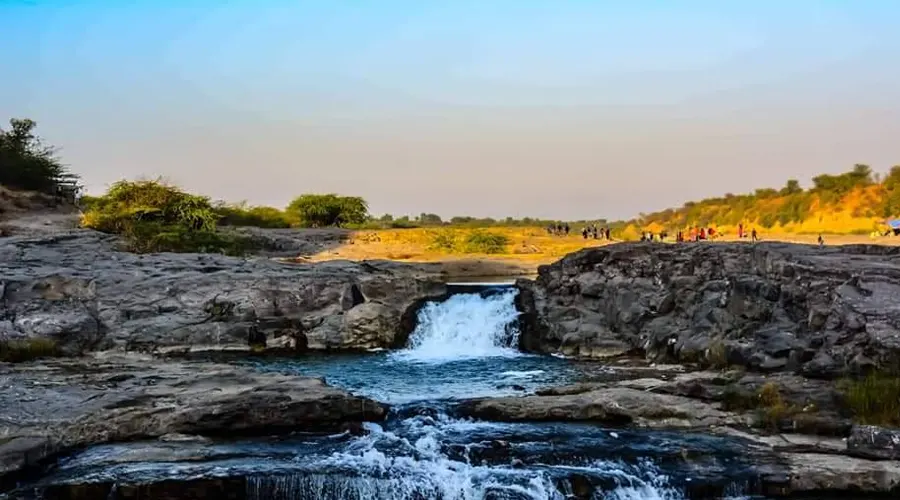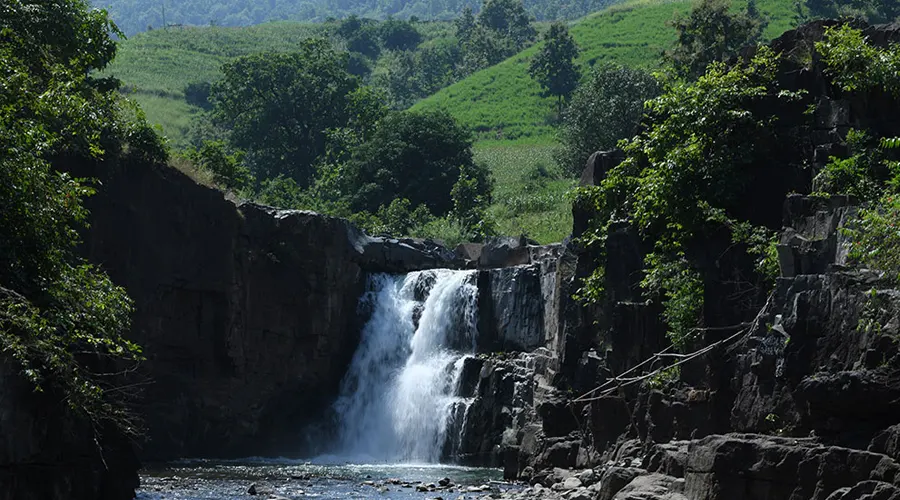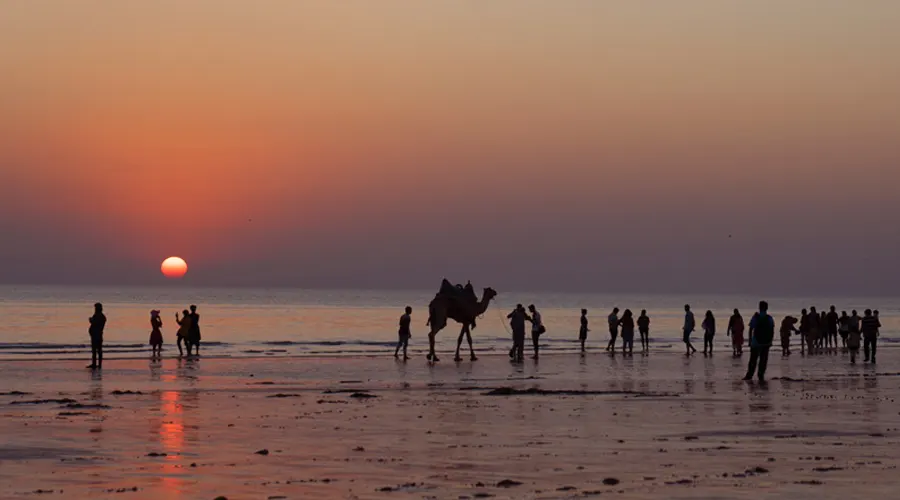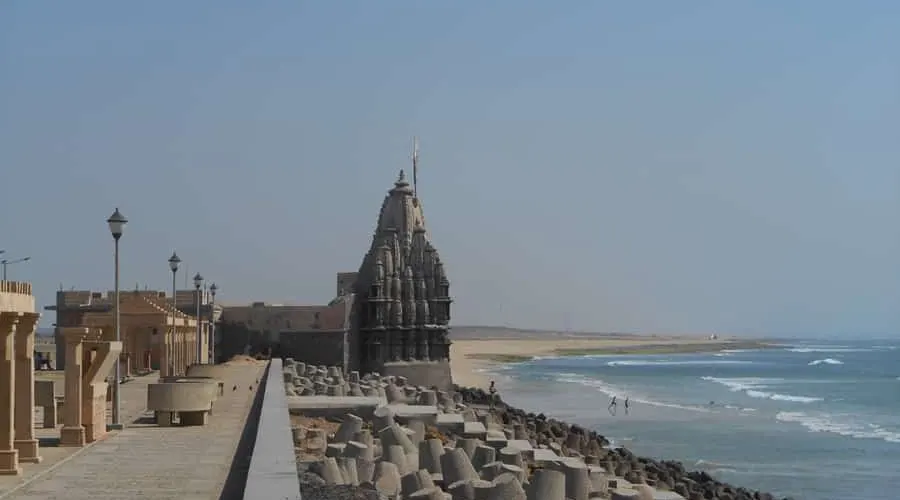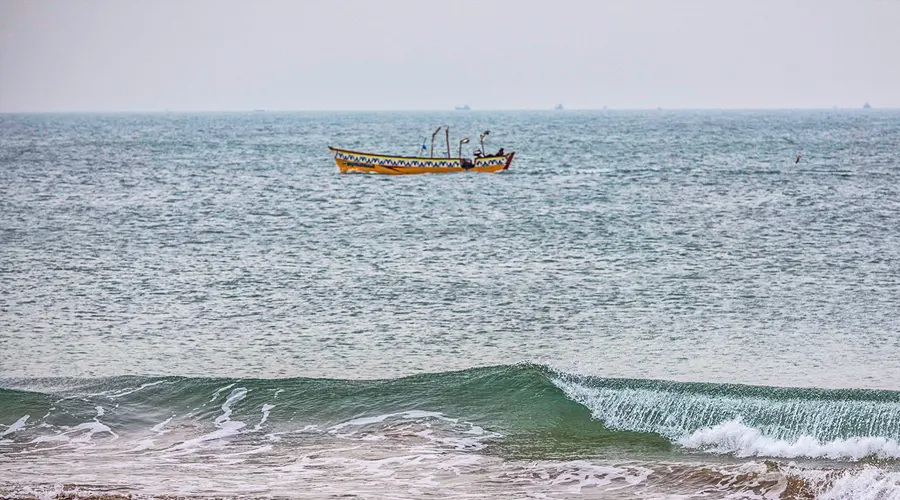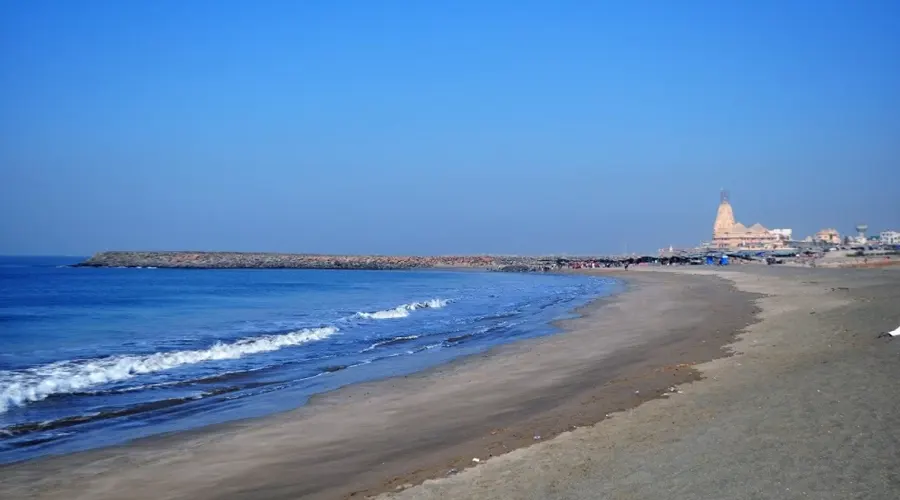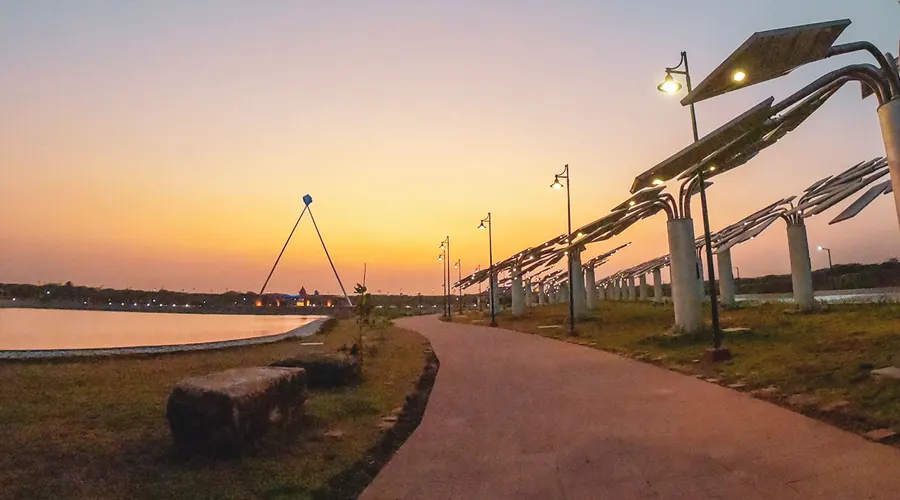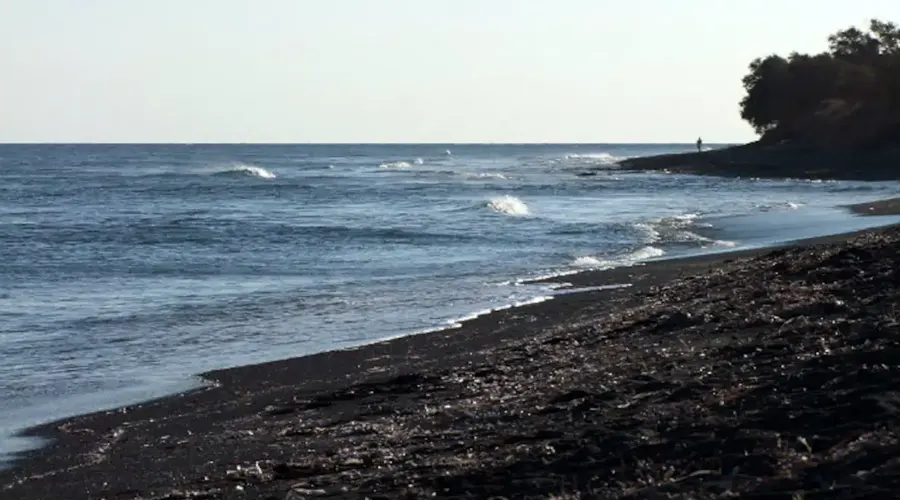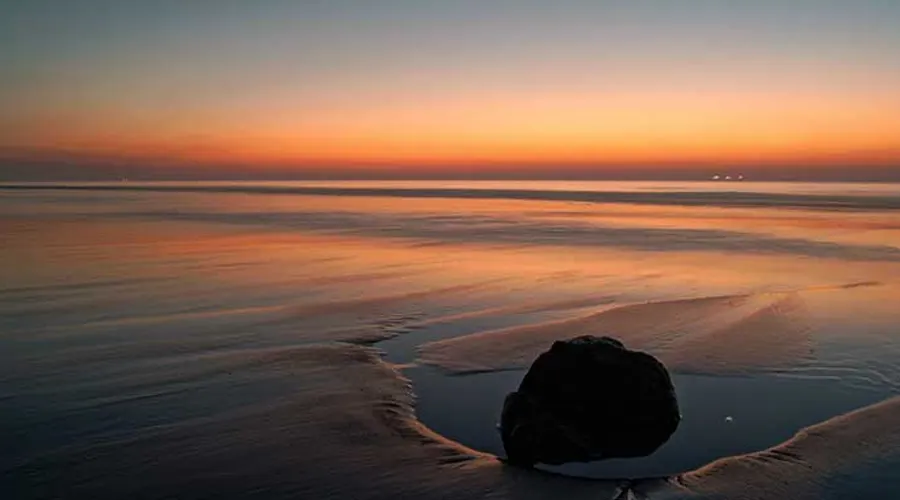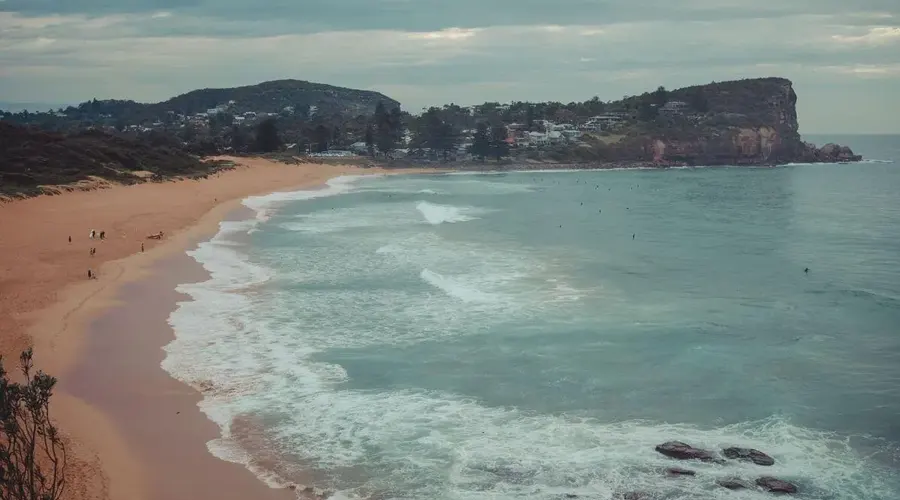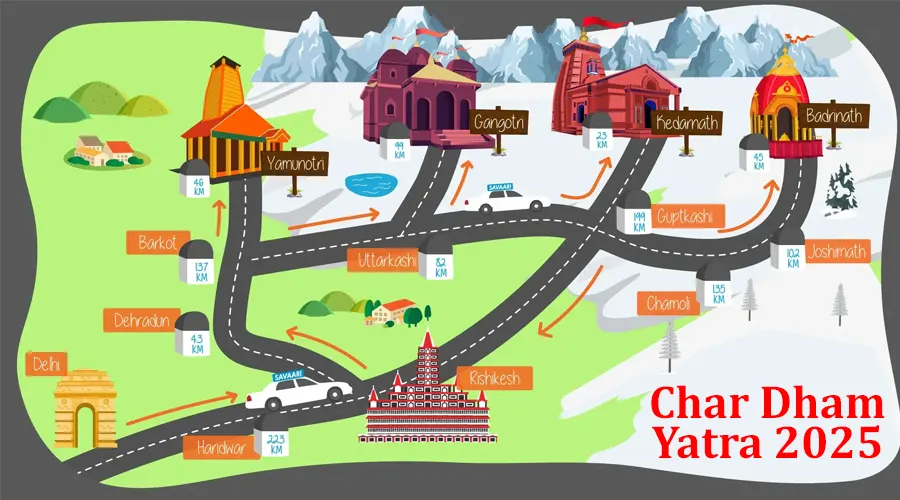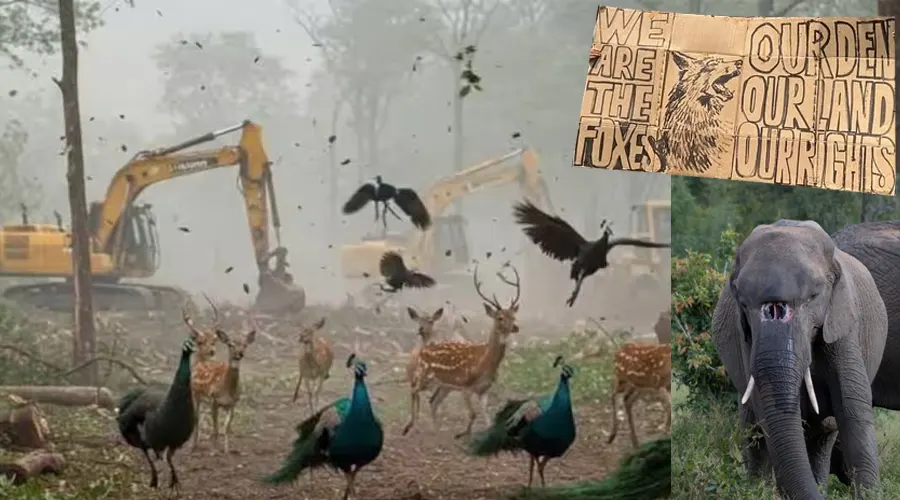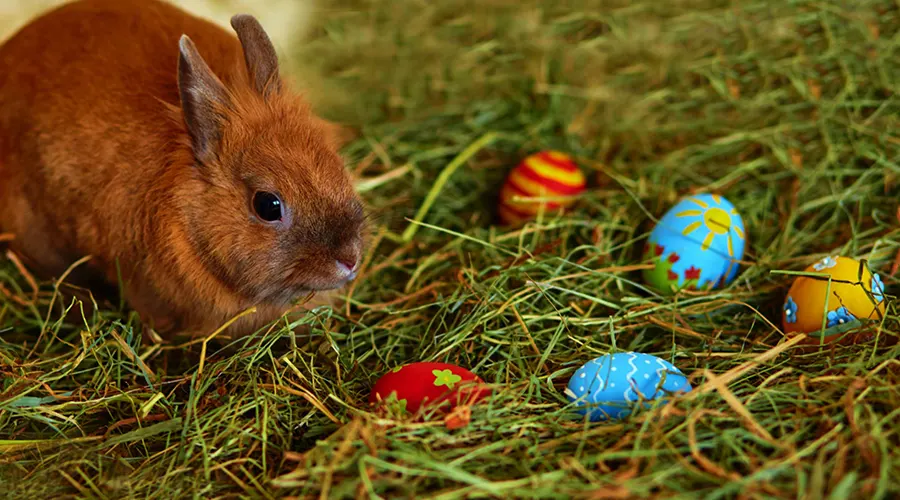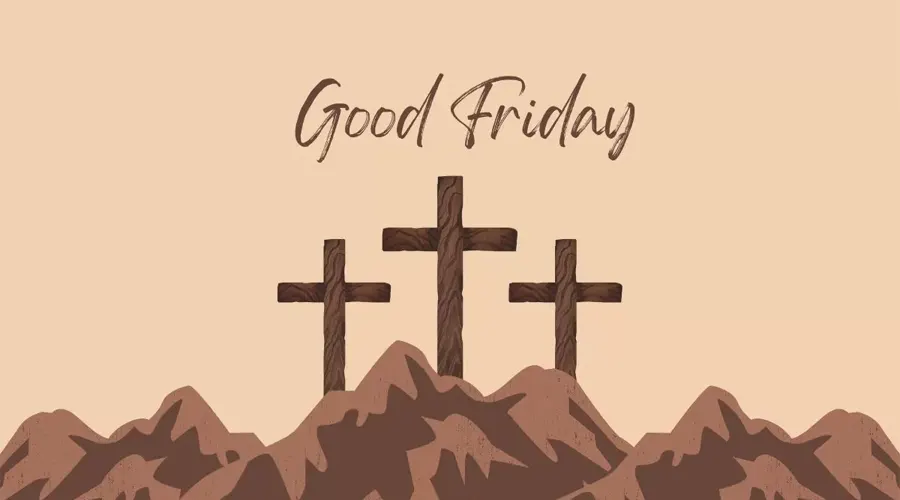Explore the Wonders of Gujarat: A Perfect Blend of Culture, History, and Natural Beauty
Gujarat, located on the western coast of India, is a state brimming with culture, history, and diverse landscapes. From its majestic temples and historical forts to its scenic beaches and wildlife sanctuaries, Gujarat offers a plethora of experiences for every type of traveler. Whether you're a history enthusiast, a nature lover, or someone eager to experience the rich local culture, Gujarat has something unique to offer. Here's a glimpse of the best tourist destinations in Gujarat.
Top Tourist Destinations, Culture, and Attractions in Gujarat
Gujarat, known for its vibrant culture, historical landmarks, and diverse landscapes, is a perfect destination for all types of travelers. From serene beaches and wildlife sanctuaries to ancient temples and modern cities, Gujarat offers a mix of experiences. Here are some of the top attractions:
1. Rann of Kutch
- Attractions: The Rann of Kutch is famous for its vast white salt desert and is a key attraction during the Rann Utsav, a cultural festival showcasing traditional music, dance, crafts, and more.
- Best Time to Visit: November to February.
2. Gir National Park
- Attractions: Home to the endangered Asiatic lions, Gir National Park is the only place in the world where you can see these majestic creatures in their natural habitat.
- Best Time to Visit: November to June.
3. Dwarka
- Attractions: Known for the Dwarkadhish Temple, one of the Char Dham pilgrimage sites, and its connection to Lord Krishna’s legend. It is also a historical and spiritual landmark for pilgrims and tourists alike.
- Best Time to Visit: October to March.
4. Somnath
- Attractions: The Somnath Temple, one of the twelve Jyotirlingas, is a significant pilgrimage site, known for its coastal beauty and ancient architecture.
- Best Time to Visit: October to March.
5. Ahmedabad
- Attractions: As the largest city in Gujarat, Ahmedabad offers a blend of history, culture, and modernity. Key sites include the Sabarmati Ashram, Sidi Saiyyed Mosque, and Kankaria Lake.
- Best Time to Visit: November to February.
6. Vadodara
- Attractions: Known for its royal palaces, museums, and cultural heritage, Vadodara’s must-see attractions include the Laxmi Vilas Palace and Baroda Museum & Picture Gallery.
- Best Time to Visit: October to March.
7. Kutch
- Attractions: Famous for the Rann of Kutch and traditional handicrafts, the region is home to vibrant cultural festivals and pristine beaches like Mandvi.
- Best Time to Visit: November to February.
8. Saputara
- Attractions: Gujarat’s only hill station, Saputara, is known for its cool climate, Saputara Lake, and scenic views. It’s perfect for a peaceful retreat.
- Best Time to Visit: November to February.
9. Palitana Temples
- Attractions: A revered site for Jains, the Palitana Temples on Shatrunjaya Hill are an important pilgrimage and boast over 800 intricately carved temples.
- Best Time to Visit: October to March.
Cultural Tourism in Gujarat
Gujarat’s culture is as diverse as its landscapes. Explore traditional crafts, such as Bandhani (tie-dye fabrics), Kutch embroidery, and Patola silk weaving, which you can find in local markets and craft villages.
- Garba Dance: The Garba dance, particularly during the Navratri festival, is a lively and colorful cultural experience.
- Festivals: Gujarat is known for its grand festivals, including Navratri, Makar Sankranti, Kite Festival, and Rath Yatra.
Adventure Tourism in Gujarat
For adventure lovers, Gujarat offers exciting opportunities such as:
- Wildlife Safaris: Beyond Gir National Park, explore other sanctuaries like Blackbuck National Park and Velavadar.
- Water Sports: The beaches of Diu and Mandvi offer water activities such as parasailing, windsurfing, and jet skiing.
- Trekking: Explore Girnar Hills and Saputara for stunning trekking routes.
History of Gujarat: A Journey Through Time
Gujarat, one of the most vibrant and historically significant states in India, boasts a rich cultural heritage that dates back to ancient times. From its early settlements during the Harappan Civilization to being a major center of trade, art, and politics, Gujarat’s history is marked by a blend of diverse cultures, dynasties, and influences. Here’s a glimpse into the fascinating history of Gujarat:
1. Ancient History: Harappan Civilization
Gujarat’s history traces back to the Indus Valley Civilization (around 3300 BCE to 1300 BCE), with the coastal regions of the state playing a significant role in this early civilization. Archaeological sites like Lothal, a major port city of the Harappan civilization, highlight Gujarat’s historical importance as a hub of trade and craftsmanship.
- Lothal: This ancient city, located in the Saurashtra region, is renowned for its dockyard, proving that Gujarat had a thriving maritime trade network with regions as far as Mesopotamia and the Arabian Peninsula. The discovery of beads, pottery, and tools at Lothal suggests the region's prominence in the ancient world.
2. The Mauryan and Gupta Periods
After the decline of the Harappan Civilization, Gujarat saw the rise of several ancient Indian kingdoms, most notably the Mauryan Empire under Chandragupta Maurya. The Mauryas brought Gujarat under their control in the 4th century BCE, and it remained a significant region in Indian history during the reign of Ashoka (c. 268–232 BCE).
- Ashoka: The famous Mauryan emperor spread the teachings of Buddhism across Gujarat, and it is believed that many of his edicts were inscribed in the region.
- The Gupta period (c. 4th–6th century CE) saw a flourishing of art, culture, and architecture in Gujarat, with the region benefiting from trade routes and cultural exchanges.
3. The Medieval Period: Muslim Influence
From the 7th century onwards, Gujarat became a melting pot of cultures, influenced by several dynasties and rulers, including the Solankis (Chaulukyas) and later the Delhi Sultanate.
- Solanki Dynasty (10th–13th century): The Solanki rulers played a pivotal role in establishing Gujarat’s architectural and cultural identity. They are known for building grand temples, including the famous Sun Temple at Modhera and the Kumbhariya Jain temples.
- Delhi Sultanate and the Gujarat Sultanate (12th–16th century): With the rise of the Delhi Sultanate, Gujarat became a center of Islamic rule under the Gujarat Sultanate (c. 14th–16th century). The sultanate's capital, Ahmedabad, flourished as a trade hub and cultural center. The influence of Muslim rulers is evident in the architectural marvels of the state, such as the Sidi Saiyyed Mosque in Ahmedabad.
4. The Mughal Era and the Marathas
Gujarat’s history was significantly shaped by the Mughal Empire in the 16th and 17th centuries. Under Emperor Akbar, Gujarat was an important province known for its wealth and strategic coastal position.
- Mughal Rule: Gujarat was a major part of the Mughal Empire, with Akbar annexing the region in 1572. Ahmedabad, the capital, became an important administrative and economic center.
- Maratha Influence: The decline of the Mughal Empire in the 18th century saw the rise of the Maratha Confederacy. Gujarat was later dominated by the Marathas, and several key battles were fought for control of the region.
5. Colonial Era: The British Rule
The British East India Company began influencing Gujarat in the early 19th century, and by the mid-1800s, Gujarat became part of the British colonial empire. The region’s port towns, such as Surat and Vadodara, played a key role in British trade networks, particularly for cotton and spices.
- Indian Rebellion of 1857: Gujarat saw some resistance during the First War of Indian Independence in 1857, with local leaders leading revolts against British rule.
- The Freedom Struggle: Gujarat holds a special place in India's fight for independence, with figures like Mahatma Gandhi emerging as leaders of the movement. Gandhi’s ashram in Sabarmati (Ahmedabad) became the center of India's non-violent struggle against British rule, marking a pivotal chapter in India’s independence movement.
6. Post-Independence and Modern Gujarat
After India gained independence in 1947, Gujarat became a separate state in 1960, following the bifurcation of the Bombay State. The new state quickly grew in importance due to its thriving industrial sector, historical significance, and vibrant culture.
- Economic Growth: Gujarat has long been a hub for trade, industry, and commerce. The state’s development as a center for textiles, chemicals, and engineering industries made it one of the most economically prosperous states in India.
- Cultural Renaissance: Gujarat’s history of trade and cultural exchange has left a lasting impact on its art, dance, music, and architecture. The state is known for its Garba dance, Kutch embroidery, and traditional Gujarati folk music.
Cuisine of Gujarat: A Taste of Tradition and Flavorful Delights`
Gujarat, known for its rich cultural heritage and vibrant traditions, also boasts a cuisine that is diverse, colorful, and packed with unique flavors. Gujarati food is primarily vegetarian, with an emphasis on combining sweet, salty, sour, and spicy elements in each dish, making it one of the most distinct and delicious regional cuisines in India. From street food to traditional feasts, the cuisine of Gujarat offers something for every palate.
1. Signature Dishes of Gujarat
- Dhokla: One of the most popular snacks in Gujarat, dhokla is a savory, steamed cake made from rice and gram flour. It is light, spongy, and usually served with green chutney or sweet and sour tamarind chutney. It’s a favorite breakfast or tea-time snack for many Gujaratis.
- Thepla: Another signature dish, thepla is a flatbread made from whole wheat flour, fenugreek leaves (methi), and spices. It’s commonly served with yogurt or pickle and is a go-to snack for travelers due to its portability.
- Khandvi: This dish is made from gram flour and is cooked into thin, savory rolls. It’s flavored with mustard seeds, sesame seeds, and curry leaves. Khandvi is often served as an appetizer or snack and is light yet flavorful.
- Handvo: A savory, spiced vegetable cake made from rice and lentils, handvo is baked to perfection with a crispy crust. It is rich in flavors and often enjoyed as a breakfast item or as part of a meal with yogurt or chutney.
2. Street Food
- Farsan: Gujarat is famous for its farsan (savory snacks), which include a variety of items like khaman, gathiya, and samosas. These are typically deep-fried and served with a range of chutneys.
- Pani Puri: Known by many names across India, pani puri in Gujarat is served with a sweet and spicy tamarind water that provides a tangy burst of flavor. It's a street food favorite loved by locals and tourists alike.
- Sev Usal: A popular street food from Surat, sev usal is made from usals (a spicy curry of beans and legumes), topped with sev (crispy gram flour noodles), and garnished with onions, tomatoes, and fresh coriander.
3. Traditional Dishes
- Undhiyu: A classic Gujarati winter dish, undhiyu is a mixed vegetable curry cooked with a variety of seasonal vegetables such as sweet potatoes, eggplant, and beans, along with fenugreek dumplings. It is traditionally slow-cooked and served with puris (fried bread).
- Gujarati Thali: The quintessential Gujarati meal, a thali consists of multiple small portions of different dishes, including dal, rice, rotis, sabzi (vegetable curry), kadhi (yogurt-based curry), pickles, and buttermilk. This balanced meal combines sweet, sour, and spicy elements in every bite.
- Kadhi: This is a unique, yogurt-based curry made with gram flour and spices, often paired with rice. Gujarati Kadhi is sweeter compared to its counterparts in other regions of India and is a comforting dish, particularly during cold weather.
4. Sweets and Desserts
- Shrikhand: A traditional Gujarati dessert made from strained yogurt, sugar, and cardamom, often flavored with saffron or pistachios. It’s served chilled and is a popular dish during festivals like Holi and Diwali.
- Mohanthal: A rich, sweet fudge made from gram flour, ghee, and sugar, flavored with cardamom and garnished with nuts. It is often prepared during festivals and special occasions.
- Gulab Jamun: Although this dessert is popular throughout India, Gujarati Gulab Jamun stands out due to its soft, melt-in-the-mouth texture. It’s deep-fried dough soaked in a sugar syrup, and served warm, making it a favorite during celebrations.
- Basundi: A creamy dessert made by boiling milk and reducing it to a thick consistency, flavored with cardamom and saffron. Basundi is usually garnished with pistachios or almonds.
5. Drinks
- Chaas: Known as buttermilk in English, chaas is a refreshing, light, and mildly tangy drink made from yogurt. It’s a common accompaniment to meals and aids digestion.
- Sugarcane Juice: Freshly pressed sugarcane juice is a popular, refreshing drink enjoyed across Gujarat, especially during the summer months.
- Aamras: A traditional mango drink made from fresh, ripe mangoes and sweetened with sugar, it’s a popular drink during the mango season.
Festivals and Culture of Gujarat: A Celebration of Tradition and Spirit
Gujarat, with its vibrant culture and rich heritage, is a state that celebrates life through its festivals and customs. These festivals, steeped in centuries of tradition, reflect the region's diversity and strong spiritual roots. Whether it’s the lively dances, colorful costumes, or the exuberant celebrations, Gujarat’s festivals are a treat for the senses. Here’s a look at some of the most popular festivals and cultural practices that define the spirit of Gujarat.
1. Navratri: The Grand Festival of Dance and Devotion
Navratri, the nine-night festival dedicated to the goddess Durga, is perhaps the most famous and widely celebrated festival in Gujarat. It is a time of vibrant celebrations, and the entire state comes alive with music, dance, and prayers. During this festival, people gather to perform Garba and Dandiya Raas, traditional folk dances, in which men and women wear colorful costumes and dance in circles around a sacred fire or idol of Durga.
Navratri in Gujarat is celebrated with much zeal, and cities like Ahmedabad, Vadodara, and Surat host massive dance events where thousands participate. The energy, excitement, and community spirit of the festival make it a unique cultural experience.
2. Makar Sankranti: The Kite Festival of Gujarat
Makar Sankranti marks the arrival of winter and the beginning of the harvest season in India. However, in Gujarat, it’s best known for the Kite Festival, one of the most exciting and visually spectacular events of the year. The sky becomes dotted with thousands of colorful kites, as people of all ages engage in kite flying competitions, a tradition that has been passed down through generations.
The festival is celebrated with much enthusiasm, with people on rooftops competing to cut the kites of their opponents. This festival is marked by feasts, sweets like tilgul (made with sesame seeds and jaggery), and a spirit of camaraderie.
3. Diwali: The Festival of Lights
Diwali, the festival of lights, is celebrated across India, but in Gujarat, it is especially grand. Known as Bestu Varas, the Gujarati Diwali also marks the beginning of the new year in the region. The festival is celebrated with family gatherings, feasts, lighting oil lamps (diyas), bursting crackers, and exchanging gifts.
In addition to traditional celebrations, people also participate in Laxmi Pujan, the worship of the goddess of wealth, and Annakut, the offering of food to Lord Krishna. The streets are adorned with beautiful rangolis, and homes are decorated with intricate lights, making Gujarat a dazzling sight during Diwali.
4. Uttarayan: The Kite Flying Festival
Uttarayan is a major festival in Gujarat, marking the sun’s transition into the Capricorn sign. Celebrated with great enthusiasm across the state, it is a day dedicated to kite flying. On this occasion, people buy new kites, prepare traditional sweets like tilgul, and spend the day with loved ones. The skies are transformed into a colorful spectacle as kites of all shapes and sizes fill the air, creating a vibrant and festive atmosphere.
5. Rathyatra: The Chariot Festival of Lord Jagannath
The Rathyatra of Lord Jagannath is one of the largest and most famous festivals in Gujarat, held in Ahmedabad. This magnificent procession features elaborately decorated chariots carrying the idols of Lord Jagannath, his brother Balabhadra, and sister Subhadra. Thousands of devoted followers pull the chariots through the streets, creating a spectacular sight filled with devotion and fervor.
The festival is a visual spectacle and an incredible display of devotion. It has religious significance, but it also brings together people from all walks of life to partake in the festivities.
6. Janmashtami: The Celebration of Lord Krishna's Birth
The birth of Lord Krishna, one of the most beloved deities in Hinduism, is celebrated with great fervor in Gujarat, particularly in Dwarka, which is one of the holiest cities associated with Krishna. On Janmashtami, people observe fasting, sing devotional songs, and reenact the life of Krishna through dandiya raas and other folk performances. The festivities reach their peak at midnight when the birth of Lord Krishna is celebrated with rituals and prayers.
7. Holi: The Festival of Colors
Like many other parts of India, Holi is also celebrated with great enthusiasm in Gujarat. The festival of colors signifies the triumph of good over evil and marks the arrival of spring. People throw colored powder at each other, dance to traditional beats, and indulge in festive sweets like gujiya and doodh pak. Dolchi and Matka Phod are other traditional games that are enjoyed during the Holi festivities in Gujarat.
8. Raksha Bandhan: A Celebration of Sibling Bonds
Raksha Bandhan, a joyful celebration of the bond between brothers and sisters, is widely observed in Gujarat. On this day, sisters tie a rakhi (sacred thread) around their brothers' wrists as a symbol of love and protection, while brothers vow to safeguard their sisters. The occasion is filled with family gatherings, sweet treats, and heartfelt moments.
9. Maha Shivaratri: A Night of Devotion
Maha Shivaratri, the night dedicated to Lord Shiva, is another important festival in Gujarat. Devotees observe fasts, stay up all night chanting prayers, and visit temples to offer their devotion to Lord Shiva. In places like Somnath and Dwaraka, special rituals and prayers are performed to mark this auspicious day.
10. Gujarat's Unique Folk Arts and Crafts
Gujarat is also known for its folk arts and crafts, which are an integral part of its cultural heritage. Kutch embroidery, Bandhani textiles, Patola sarees, and Block printing are just a few examples of the state’s artistic heritage. Artisans from various parts of Gujarat use these skills to create intricate works of art, including clothing, textiles, and home decor items, which are highly valued across the globe.
Additionally, Garba, Dandiya Raas, and other regional dance forms play an important role in Gujarat’s cultural expression, performed at festivals, weddings, and other social events.
Best Time to Visit Gujarat
Gujarat, with its rich cultural heritage, historical landmarks, and diverse landscapes, is a year-round destination. However, the best time to visit depends on the type of experience you’re seeking, as well as the weather conditions. The state experiences a tropical climate, with distinct seasons that can impact your travel plans. Here’s a guide to help you choose the ideal time to visit Gujarat:
1. Winter (November to February)
- Ideal for Sightseeing and Outdoor Activities: The winter months are considered the best time to visit Gujarat. The weather is cool and pleasant, making it perfect for exploring the state’s historical sites, temples, wildlife sanctuaries, and beaches.
- Temperatures: During this period, temperatures range from 12°C to 29°C (54°F to 84°F), with clear skies and comfortable evenings.
- Festivals: Winter also coincides with some of Gujarat’s major festivals, such as the famous Rann Utsav (November to February), a vibrant cultural festival held in the Kutch region. This festival features folk music, dance, crafts, and a unique experience of the white salt desert under the moonlight.
- Ideal Activities: This is the perfect time for sightseeing, visiting Gir National Park (home to the Asiatic lion), exploring the Rann of Kutch, and enjoying the Kite Festival in Ahmedabad (if visiting in January).
2. Spring (March to April)
- Ideal for Cultural Exploration: The spring season in Gujarat brings warmer temperatures, but the weather is still relatively mild. The spring months are great for exploring Gujarat's cultural heritage, temples, and fairs, though it can get a bit warmer as the month progresses.
- Temperatures: Temperatures range from 20°C to 35°C (68°F to 95°F), with increasing warmth towards April.
- Festivals: Holi, the festival of colors, is celebrated with much zeal in March, and visiting Gujarat during this time allows you to witness the local festivities and celebrations in full swing.
- Ideal Activities: Cultural exploration, enjoying local fairs, and visiting places like Dwarka and Somnath temples.
3. Summer (May to June)
- Hot and Dry: Gujarat experiences extremely hot temperatures during the summer months, with scorching heat making outdoor activities less enjoyable. Summer is not considered the best time to visit, especially if you plan on sightseeing or exploring the state in detail.
- Temperatures: Temperatures can soar above 40°C (104°F), and some areas, like Kutch and Saurashtra, can reach even higher temperatures.
- **However, if you plan to visit the Gir National Park, summer might be a good time to see the Asiatic lions as the dense vegetation reduces and animals come to water sources, making them easier to spot.
- Ideal Activities: If you do visit during summer, focus on indoor activities such as visiting museums, forts, and temples. You can also explore coastal regions like Diu or Gandhidham, where the coastal breeze can provide some relief from the heat.
4. Monsoon (July to September)
- Rainy and Humid: The monsoon season brings moderate to heavy rainfall to Gujarat, and while the landscapes become lush and green, travel can be difficult due to flooding and slippery roads. The humidity during this season is high, and outdoor activities like sightseeing and trekking can be uncomfortable.
- Temperatures: Temperatures range from 25°C to 35°C (77°F to 95°F), but the humidity makes it feel hotter.
- Ideal Activities: Monsoon is not the ideal time for sightseeing or outdoor activities in Gujarat. However, if you enjoy the monsoon atmosphere, this is the time when Gir National Park reopens, and you can enjoy the beauty of wildlife in the lush greenery.
How to Reach Gujarat
Gujarat, a vibrant state in Western India, is well-connected by air, rail, and road, making it easily accessible from different parts of the country and beyond. Whether you are flying in from abroad, traveling by train, or driving, Gujarat offers multiple options to reach and explore its cultural and historical landmarks.
1. By Air
- Major Airports: Gujarat has several international and domestic airports that connect it to key cities in India and abroad. The main airports include:
- Sardar Vallabhbhai Patel International Airport (Ahmedabad): The busiest airport in Gujarat, located in the state’s largest city, Ahmedabad. It handles both domestic and international flights.
- Vadodara Airport (Vadodara): A smaller international airport that connects Gujarat to major cities in India and the Middle East.
- Surat International Airport (Surat): This airport connects Surat with key cities in India, especially in the western region.
- Rajkot Airport (Rajkot): Serving the Saurashtra region, this airport connects Rajkot to major Indian cities.
- International Flights: Major international airlines operate flights to Ahmedabad and Vadodara, connecting Gujarat with cities like Dubai, London, Singapore, and Abu Dhabi.
2. By Train
- Major Railway Stations: Gujarat has an extensive and well-connected railway network, linking it to other parts of India. Key railway stations include:
- Ahmedabad Junction: The primary station in Gujarat, offering connectivity to cities like Mumbai, Delhi, Jaipur, and Kolkata.
- Vadodara Junction: Another major station well-connected to other cities, including Ahmedabad, Surat, and Mumbai.
- Surat Junction: Serving the textile hub of Gujarat, this station is well-connected to Mumbai, Delhi, and other major cities.
- Rajkot Junction: Connected to several Indian cities, particularly those in the western and central parts of India.
- Train Services: Gujarat is accessible through high-speed trains like Shatabdi Express, Rajdhani Express, and Duronto Express, which offer a comfortable journey.
3. By Road
- National Highways: Gujarat is well-served by a network of national highways that connect it to major cities across India. The state is connected to cities like Mumbai, Delhi, Udaipur, and Jaipur through well-maintained roads.
- Mumbai to Ahmedabad: Approximately 530 km via NH48 (around 8-10 hours by road).
- Delhi to Ahmedabad: About 1,000 km via NH48 (around 15-17 hours by car or bus).
- State Transport and Private Buses: Gujarat State Road Transport Corporation (GSRTC) operates buses connecting major cities and towns within Gujarat, as well as with neighboring states. Private bus operators also offer services to key destinations across the state.
- Self-Drive: Many travelers choose to hire a car and explore Gujarat at their own pace. The well-maintained highways and scenic routes make it an enjoyable road trip.
4. By Sea
- Major Ports: Gujarat has several ports along its coastline, making it accessible by sea. The main ports include:
- Mundra Port: One of the largest commercial ports in India, located near Kutch.
- Kandla Port: Located near the Gulf of Kutch, it is an important port for international shipping.
- Cruise Services: Gujarat is also seeing an increase in cruise tourism, especially to destinations like Diu and Dwarka, where cruise services from neighboring states like Maharashtra and Goa are available.
Conclusion: Why Visit Gujarat?
Whether you're captivated by its vibrant culture, stunning landscapes, or historic landmarks, Gujarat has something to offer every kind of traveler. From the sacred temples of Dwarka and Somnath to the wildlife sanctuary of Gir and the cultural beauty of Kutch, this western state of India promises a journey filled with memories and discoveries. Explore Gujarat and experience its warmth, hospitality, and charm first-hand!

